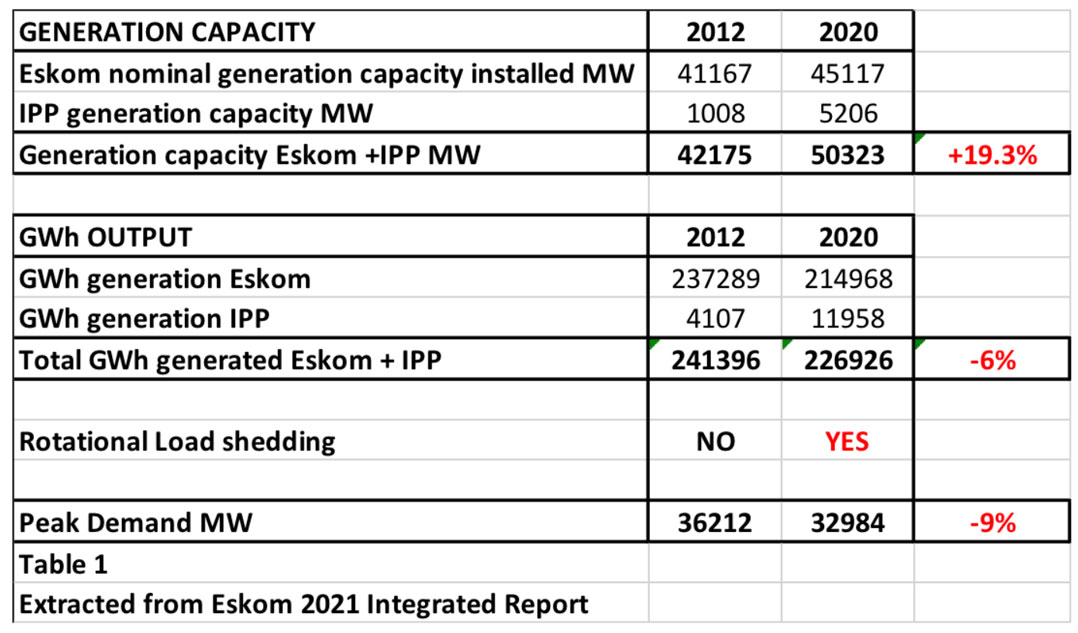
Eskom completely underestimates the consequential damage of its bungling of the Medupi and Kusile power station projects and expects the consumer to pay for the long-term damage, says the Association of South African Chambers (Asac) in its written submission about the utility’s application for a tariff increase of 20% from 1 April.
According to energy regulator Nersa, the increase could be as high as 40% if amounts clawed back in relation to previous years and court orders are included.
Asac is one of several stakeholders expected to make presentations on Monday, the first day of energy regulator Nersa’s public hearings about the application. Nersa will make a final determination on Eskom’s tariffs in February.
Asac consists of the:
- Johannesburg Chamber of Commerce and Industry
- Durban Chamber of Commerce & Industry
- Cape Chamber of Commerce and Industry
- Pietermaritzburg and Midlands Chamber of Business
- Middelburg Chamber of Commerce
- Nelson Mandela Bay Business Chamber
- Border-Kei Chamber of Business
- George Business Chamber
According to the association, Eskom, in its application, treats the failure to deliver its Medupi and Kusile power stations on time, within budget and operating properly as a “done deal” and expects the consumer to pay for all the consequential damage this failure has caused through sky-high electricity tariffs.
The two power stations were supposed to add 9.6GW of power (an addition of more than 20%) to Eskom’s generation capacity, and be in full operation by 2015 and 2018 respectively.
After overspending at least R100-billion on the projects so far, the last unit of Medupi only came into commercial operation last year, while only half of the units at Kusile are in commercial use so far. The last unit is only expected to be handed over in 2024.
Insult to injury
To add insult to injury, the nine operating units are only performing at about half their capacity, says Asac.
Even if only nine of the 12 stations currently commissioned were operational and performing reasonably “South Africa would not be in a power crisis”. According to Asac, the reality “is catastrophic for Eskom and for most of us in South Africa”.
It criticises Eskom for including the consequential cost of the Medupi and Kusile failure in what it considers prudent cost that has to be footed by consumers.
According to Asac this includes:
- All load shedding incurred since 2015;
- All load curtailment incurred since 2015;
- All excessive usage of open-cycle gas turbines to supplement insufficient generation since 2015;
- The need to keep older less-efficient capacity running given the delays on new generation capacity (older coal power stations need to keep running and their assets need to be maintained);
- Poor performance of the existing older generation fleet (according to Eskom); and
- Pressure to raise alternative generation sources such as independent power producers (IPPs), including the excessive cost of the planned “risk mitigation programme” (Karpowership and others).
For Eskom to blame its problems on the poor performance of its older coal-fired power stations is delusional, says Asac.
The root cause is that the new generation capacity is not performing and over and above paying to finance the construction of Medupi and Kusile, Eskom also expects consumers to pay for this “substantial inefficient cost”, it argues.
The organisation also questions Eskom’s ability to manage the balance of its generation fleet properly. It points out that the availability of the plant has dropped substantially – from 82% in 2012 to 64% last year. “This means that an additional 18% of Eskom’s generation capacity stands idle.”
Based on Eskom’s valuation of its generation fleet in the application, this means that R180-billion of assets are “standing idle as a result of poor operational practices”.

Asac quotes a 2019 study by Primaresearch that Eskom also uses in its application, which shows that many generation fleets as old as Eskom’s around the world are functioning well. It concludes that mismanagement and dysfunctionality within Eskom is the real reason for its poor performance.
It therefore questions the inclusion of all operational costs of the poorly performing fleet in Eskom’s application, since the utility is by law only entitled to recover prudently incurred cost from consumers through electricity tariffs.
Asac further questions the inclusion of the consequential damage caused by the poor fleet performance, which it says Eskom also expects consumers to pay for. “The cost of the consequential damage cannot be considered efficient and should hence not become part of the tariffs,” it argues.
Asac demonstrates that the country’s power system produced 6% more electricity in 2012 than in 2020. “The 20% excess available capacity in 2020 vs 2012 was utterly ineffective and wasted,” it says. “However, the consumer is expected to pay for the availability of such capacity.”
In reality Eskom needs the high tariffs it is applying for in order to keep excess inefficient capacity running, says Asac. It asks Nersa to remove inefficient costs included in Eskom’s application and reduce the income requirements accordingly.
- This article was originally published by Moneyweb and is republished by TechCentral with permission




